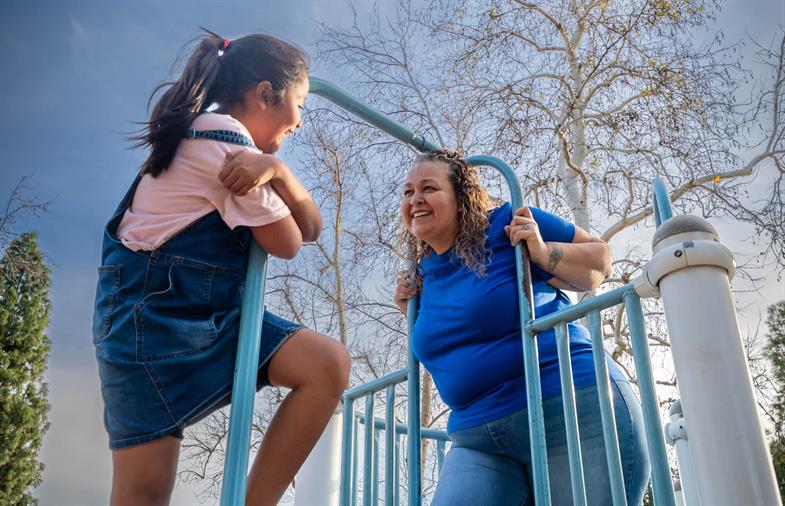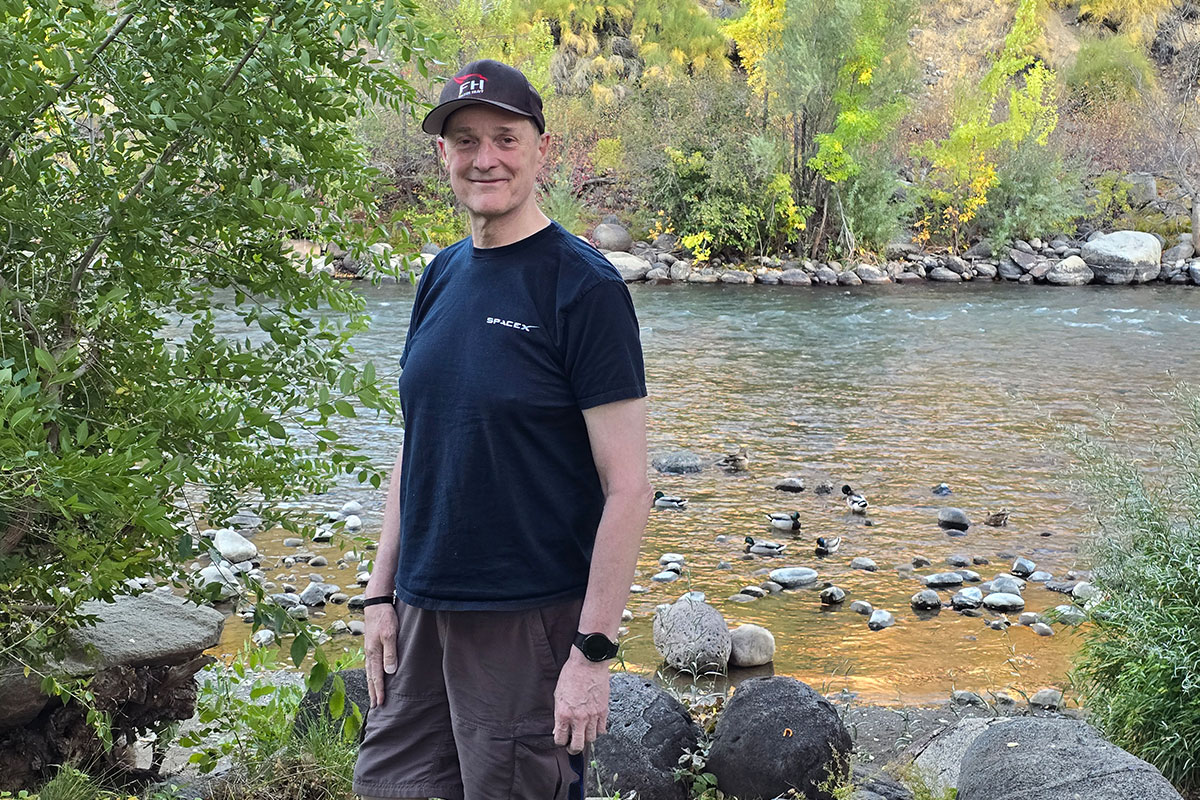Feeling Better in Her Body
Mar 8, 2023

A local woman is active again after weight loss surgery.
Yvonne Lagunas used to love walking to the local swap meet with her husband. But over time, it became harder to manage the journey.
“I would get tired within 10 minutes, or it was too hot and I felt like I was going to pass out,” she recalls. “My weight had a lot to contribute to that.”
However, it was when she sought treatment for severe abdominal pain that Lagunas knew it was time to lose weight.
“I had a noncancerous tumor on my spleen that was causing pain,” she says. She visited Andrea Pakula, MD, medical director of robotic surgery at Adventist Health Simi Valley, to talk about removing the organ.
“Spleen surgery is complex,” Dr. Pakula explains, “so I advised her that we should aim to get her weight down prior to surgery to improve her outcome.”
Dr. Pakula specializes in robotic bariatric (weight loss) surgery, which she thought could help Lagunas live a healthier life with less pain. They decided to schedule weight loss surgery before removing the spleen.
The support to succeed
Before her weight loss surgery, Lagunas worked with a registered dietitian and a psychologist.
“We recommend these steps to make sure people have the proper support,” says Lauren Poliakin, MD, medical director of bariatrics and weight management at Adventist Health Simi Valley. “This is a totally life-changing surgery, so it’s important to make sure people are ready for the lifelong commitment to lose the weight and keep it off.”
Choices for surgery
When she was ready for her operation, Lagunas had two options: sleeve gastrectomy or gastric bypass.
“With a sleeve gastrectomy, we remove approximately 80 percent of the stomach, which leads to a feeling of fullness and has other effects for weight loss,” Dr. Pakula explains. “For gastric bypass, we make a small stomach pouch and connect it to the small intestine, so it essentially passes over a large portion of the stomach and small intestine.” This results in the stomach being able to hold less food and the body absorbing fewer calories and nutrients.
Together, Lagunas and Dr. Pakula determined that a sleeve gastrectomy was the best surgery for her needs.
Drs. Pakula and Poliakin do both operations using the da Vinci robot, a machine that helps specially trained surgeons perform complex procedures through smaller incisions, meaning less pain and a shorter recovery time. Lagunas went home the same day as her surgery and had minimal postoperative pain.
Lasting improvement
Since her operation, Lagunas has lost 47 pounds. As a result, her abdominal pain has subsided. “My stomach is no longer leaning on my spleen and causing pain,” Lagunas says. “In fact, Dr. Pakula says we might not need to remove it now.”
Dr. Poliakin cautions that weight loss surgery isn’t a quick-fix procedure that works without a lot of effort on the patient’s part — the surgery is used as a tool for weight loss. “The people who are most successful are the ones who understand they have to make changes to their lifestyle, improve their eating habits and stay active,” she says.
Dr. Pakula agrees that improvement in symptoms and quality of life can be incredible when people are committed and supported. “Yvonne may not need to have her spleen removed, and I have so many other patients who have similar experiences — they’re no longer on medication for blood pressure, they don’t have to have knee surgery, or their diabetes is in remission because they were able to lose weight.”
Lagunas is back to walking to the swap meet and playing with her kids.
“We go on long walks or play at the park, and I can do it without feeling tired,” she says. “I’m so glad I did the surgery; I feel healthier and more active. It was a great decision.”
Related articles

Liftoff to Life After Death: Cooling Treatment, Surgery Helps Patient Recover After Cardiac Arrest
November 19, 2024

Back on the Surfboard After Open-Heart Surgery
November 1, 2023

Finding Healing, Hope and Community During Cancer Journey Through Art Therapy
March 11, 2024